Featured Video
Rafael Devers Walks off Braves

Kodai Senga's 'Ghost' Forkball and the Filthiest Pitches of 2023 MLB Season
Being a major league pitcher isn't the sweet gig that it used to be. You can't use sticky stuff. You can't take your time. Heck, you can't even rely on over-shifted defenders and small bases to save your bacon in a pinch.
But for all the things Major League Baseball can change, it will never be able to outlaw filthy pitches.
So, let's look at the filthiest of them all through the first month of the 2023 season. These are pitches that not only look the part, but which also trafficking in various forms of statistical dominance. In other words, they're about as unhittable as they look.
We have one selection for each pitch type, amounting to a total of nine. And while we will be giving honorable mentions to relief pitchers along the way, we gave the nine spotlights to starting pitchers for sample size purposes.
As always, we owe a special thank you to Rob "Pitching Ninja" Friedman for GIFs and videos.
Note: All stats are current through games on Sunday, April 23.
Luis Castillo's Four-Seam Fastball
1 of 9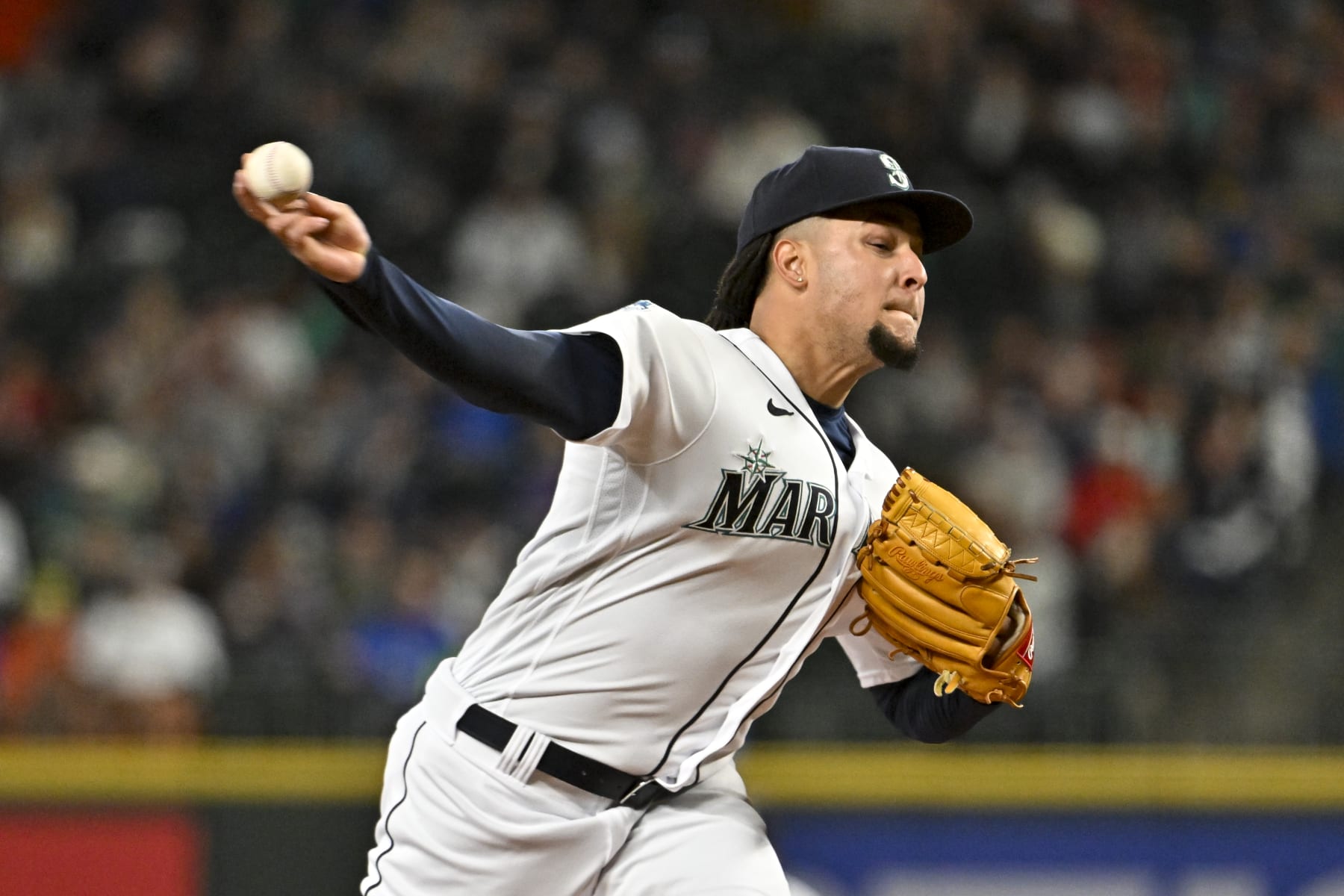
Key Stat: Its 43 whiffs lead all four-seam fastballs.
Luis Castillo loves his four-seam fastball and, really, why shouldn't he?
The Seattle Mariners ace actually threw his four-seamer less often than his changeup between 2019 and 2021, but now it's easily his primary offering and drawing whiffs on 39.1 percent of the swings against it. That's a career high.
This might seem counterintuitive in context of how Castillo's average velocity is down to a career-low 95.0 mph, but that isn't the best metric for understanding his heater.
It's better to consult vertical approach angle, which quantifies the angle at which a pitch approaches home plate. A four-seamer with a VAA close to zero degrees is considered "flat." In a good way, that is. It effectively travels the shortest distance between its release and its target, which is ideal for a pitch that's meant to beat hitters with speed.
Per Alex Chamberlain's custom leaderboard at Tableau, the VAA on Castillo's four-seamer (minus-4.0 degrees) is closer to zero than that of the average hurler (minus-4.8 degrees). If it feels like his fastball teleports to the catcher's mitt, that's why.
Honorable Mention: Jacob deGrom, Texas Rangers
Dustin May's Sinker
2 of 9
Key Stat: Its 75.0 ground-ball percentage is tied for first (min. 20 batted balls) among sinkers.
The spotlight here should probably belong to Josh Hader's sinker. It is, after all, limiting opposing batters to an .071 average and a .101 expected average.
But to be frank, Hader's sinker is kinda-sorta a fake one. And besides, it doesn't have the aesthetically pleasing arm-side run that the Los Angeles Dodgers' Dustin May gets on his sinker.
Not many pitchers pair that kind of movement with that kind of velocity when they throw their sinkers. It's really just May, Castillo (is there anything he can't do?) and Sandy Alcantara among right-handers who've thrown at least 100 sinkers.
It's therefore surprising that May has relegated his sinker to his secondary fastball in deference to his four-seamer. He's even throwing it higher in the zone, which is another one of those seemingly counterintuitive things.
But knowing that May also throws his four-seamer up in the zone, the idea seems to be to dare hitters to differentiate the two pitches before they behave differently upon reaching the hitting zone. As hitters are just 4-for-27 against May's sinker, the ruse is working.
Honorable Mention: Logan Webb, San Francisco Giants
Drew Rasmussen's Cutter
3 of 9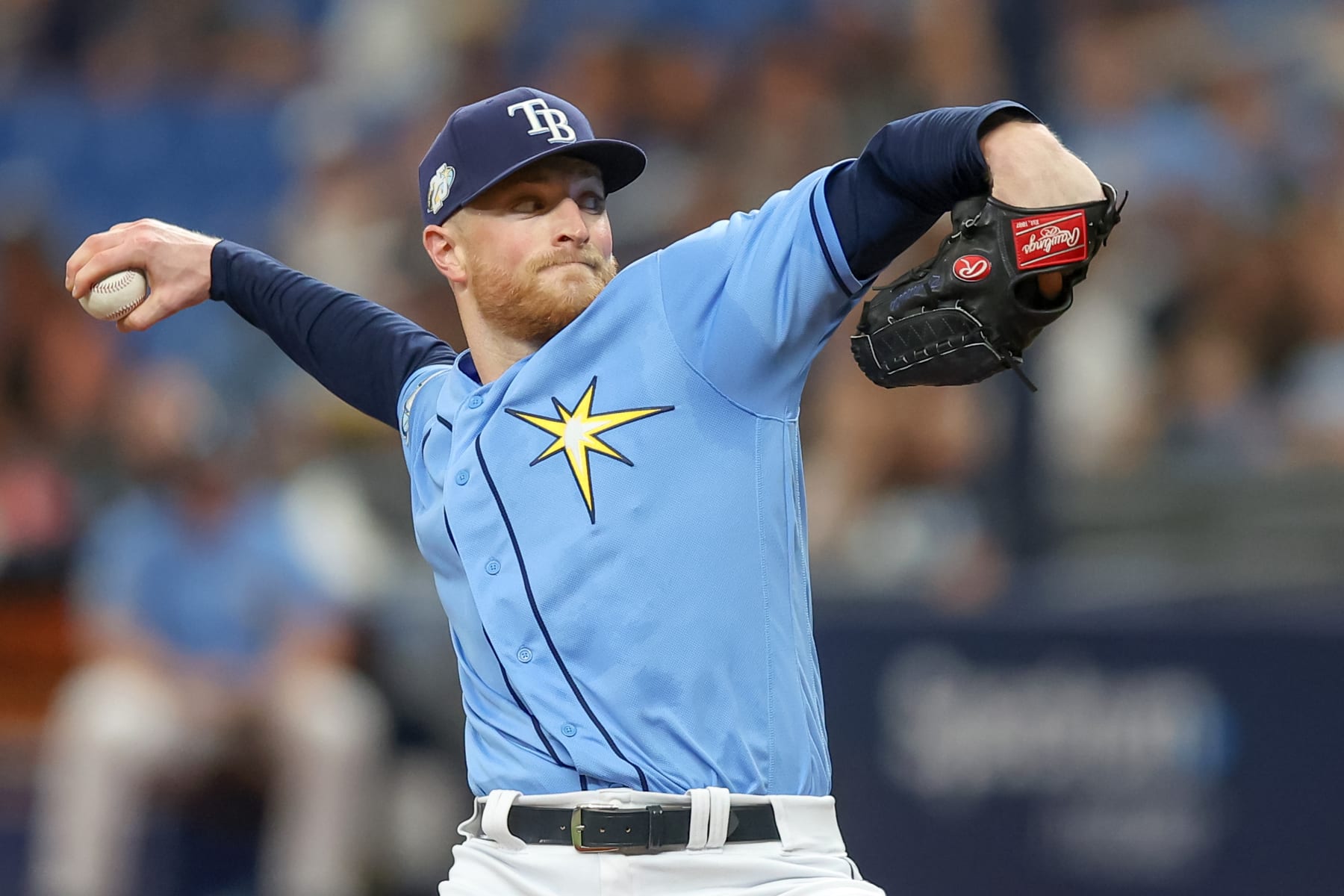
Key Stat: Among pitches that have ended at least 20 plate appearances, it's the last left standing with a .000 average.
It must be said that Drew Rasmussen deserves more recognition as one of MLB's best starters. In 40 appearances since he moved into the Tampa Bay Rays rotation on Aug. 12, 2021, he's pitched to a 2.50 ERA.
As to how he's done so, it helps that pretty much everything he throws is straight-up filth. But there's little question that his best pitch is a cutter that has some unusual properties.
It's not the velocity that makes Rasmussen's cutter special. At 88.2 mph, it actually comes in a little slower than the MLB average of 88.8 mph.
Rather, it's the movement. When you think of the typical cutter, you probably think of something that, Mariano Rivera-like, breaks hard and late to the pitcher's glove side. The action on Rasmussen's slider is more downward-biting, generally making it look more like a slider or even like a miniature split-fingered fastball at times.
Whatever the case, it's flummoxing opposing batters. The 55 swings they've taken at it have yielded 19 whiffs and just two hard-hit balls.
Honorable Mention: Luis Garcia, Houston Astros
Shohei Ohtani's Sweeper
4 of 9
Key Stat: At minus-9.0, it's tied with Gerrit Cole's four-seamer for best run value of any pitch.
Remember when Shohei Ohtani's splitter was consider the most unhittable pitch in baseball? It feels like that was forever ago.
The pitch of his that's all the rage these days is, of course, his sweeper. He loves it so much that he's throwing it more than twice as often as he's throwing any of his other pitches. We can only assume that's partly because he just likes watching it move.
Knowing that the difference between a sweeper and a traditional slider really is all about horizontal movement, it's no surprise that Ohtani has become the face of the wider, um, movement toward the pitch this season.
On average, he's putting 3.5 more inches of lateral movement toward his glove side on his sweeper than he was in 2022. More than half (112, to be exact) of the 210 he's thrown have yielded called strikes, fouls or whiffs, with only eight getting hit for hard contact.
Ultimately, opposing batters are just 3-for-48 against the Los Angeles Angels star's signature pitch. That's an .063 average that's far and away the best for any pitch that's ended at least 40 plate appearances.
Honorable Mention: Justin Lawrence, Colorado Rockies
Spencer Strider's Slider
5 of 9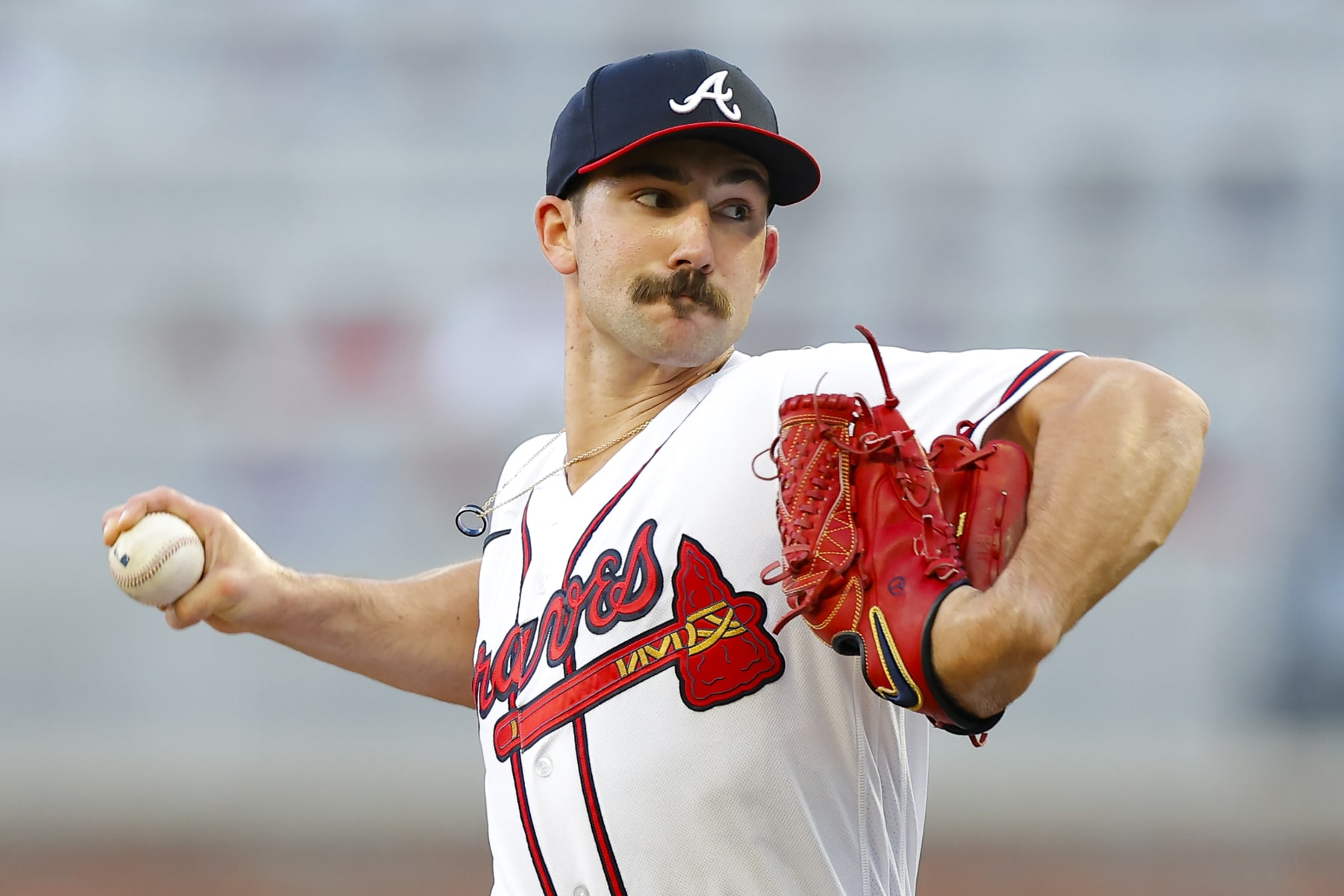
Key Stat: Its .111 xBA is the lowest among pitches that have ended 40-plus plate appearances.
Shouldn't this say Spencer Strider's four-seam fastball? That is what the Atlanta right-hander is known for, is it not?
Technically yes, and deservedly so given that his fastball was responsible for 120 of the 202 strikeouts he racked up in his sensational rookie season last year. But his slider is playing a bigger role for him in 2023 and this, too, is a "deservedly so" situation.
Strider has upped his slider usage from 28.2 to 32.6 percent and is clearly reaping the benefits. The whiff and strikeout rates on the pitch are both in the 50 percent range.
Though Strider's slider is coming in 1.5 mph slower on average than it did in 2022, the trade-off there is more downward movement. He's also been better about locating it in the "shadow" of the strike zone, where it's harder for opposing hitters to lay off it.
So dominant has Strider been with his slider that it's a bit of an injustice that batters are even 2-for-26 against it. Both hits were bloop shots whose exit velocity averaged out to 69.8 mph.
Honorable Mention: Gregory Soto, Philadelphia Phillies
Nick Lodolo's Curveball
6 of 9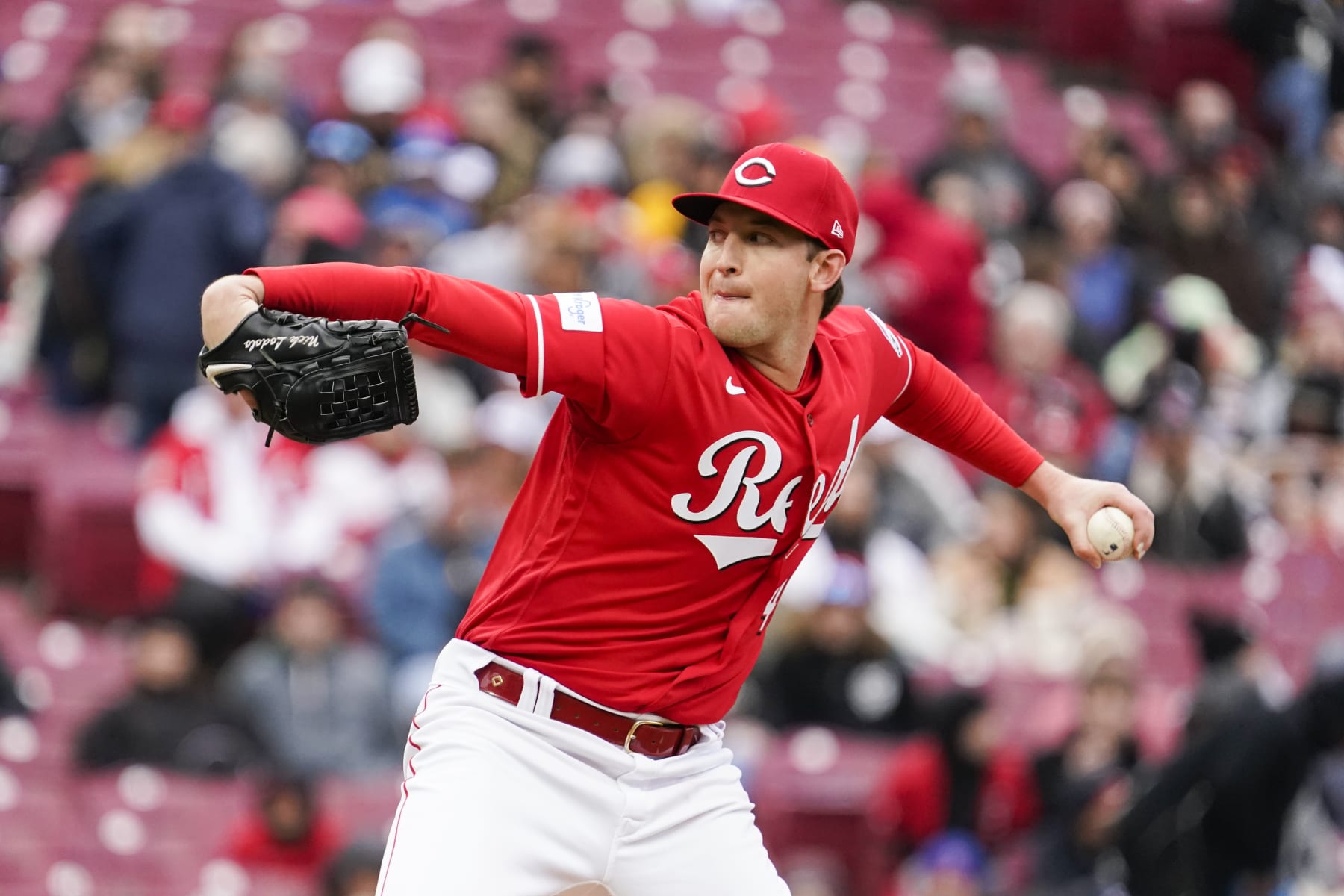
Key Stat: It's drawn 24 swings in "chase" and "waste" regions, and 23 have missed.
It is with since apologies to Phil Maton that we opted to put somebody else's curveball here. His is a high-spin demon against which batters are 0-for-17 with seven strikeouts.
But, well, can anyone really blame us for being mesmerized by the back-foot-seeking sidewinder thrown by Cincinnati Reds left-hander Nick Lodolo?
Kudos to nobody but Philadelphia Phillies utility man Josh Harrison. Of the 24 swings taken at curveballs that Lodolo has put in the "chase" and "waste" regions of the zone, his foul ball on April 8 is the only one that wasn't a swing and a miss.
A number of things make Lodolo's hook such an effective eviscerator of major league hitters. He throws from a low arm slot relative to other southpaws, and the pitch itself is characterized by good velocity (79.2 mph) and glove-side movement (15.4 inches).
It's basically a more extreme version of Framber Valdez's curveball. And while batters may be a respectable 8-for-34 against it, only three of those hits were 95-plus mph off the bat.
Honorable Mention: Charlie Morton, Atlanta
Shane McClanahan's Changeup
7 of 9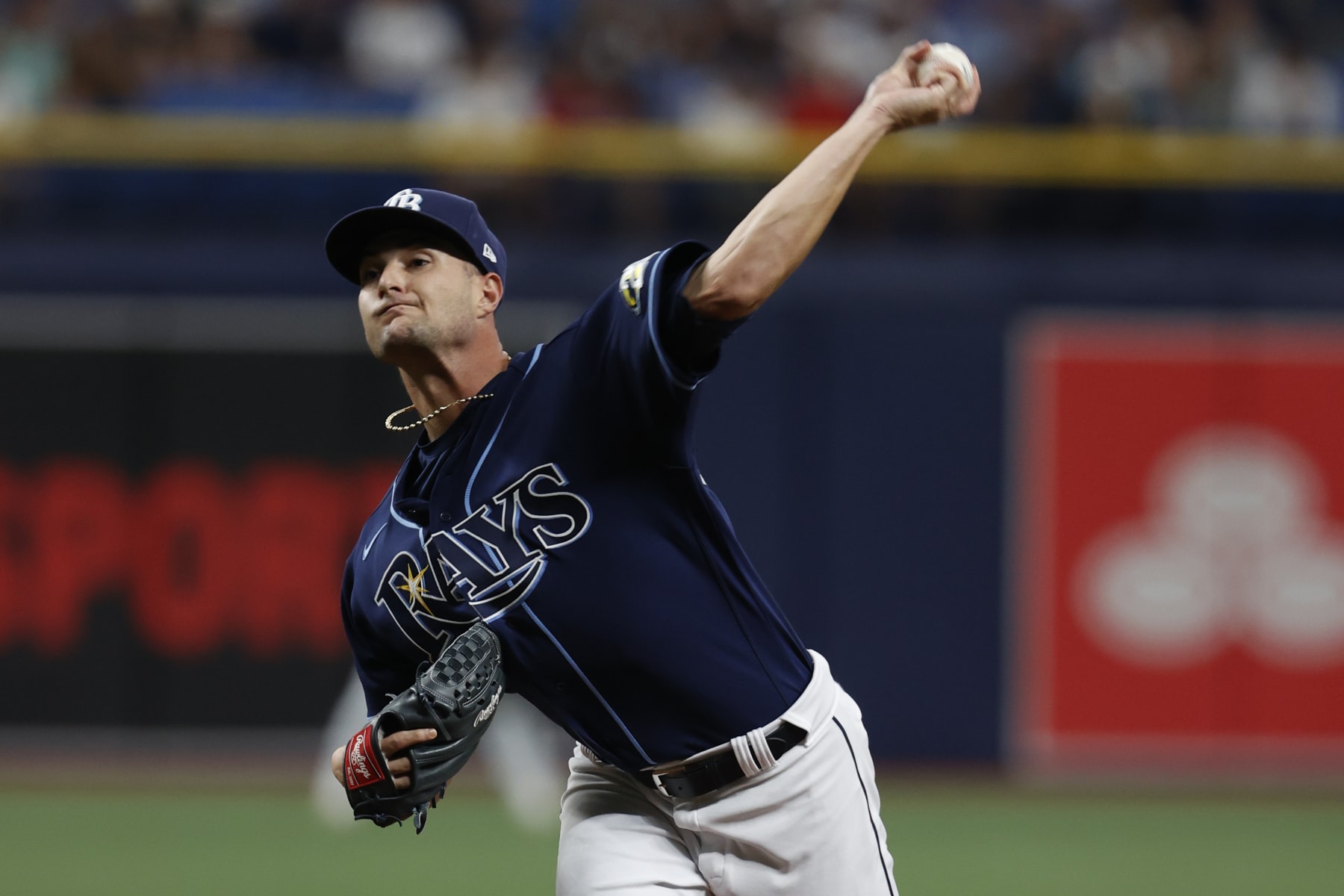
Key Stat: Its 58.2 percent whiff rate is the highest of any pitch that's been swung at 50 or more times.
If Shane McClanahan likes swings and misses in the best of times, then he's clearly determined to make 2023 the bestest of times.
His start opposite the Chicago White Sox on Saturday saw him become the first pitcher in the pitch-tracking era to record as many as 32 whiffs on fewer than 100 total pitches. He boasts a league-leading 100 whiffs for the season, with 39 of those coming on his changeup.
In defense of the hitters who took those 39 swings, there is no good advice for how to hit something like this:
The Rays lefty has sacrificed some velocity on his changeup this year, but for good causes. It now features a career-best 16.6 inches of arm-side movement on average, while the velocity differential between his change and fastball is up to 9.6 mph from 9.0 mph in 2022.
It's thus not surprising that batters have all of four hard-hit balls against the 111 changeups McClanahan has so far. It's basically impossible to be both on time and on target against it.
Honorable Mention: Pablo López, Minnesota Twins
Kevin Gausman's Splitter
8 of 9
Key Stats: It leads all pitches with 46 swings and misses and 25 strikeouts.
Yes, Félix Bautista's splitter is still out there. And yes, its 66.7 whiff rate is the best of any pitch if the bar is set to 25 swings.
But until further notice, Toronto Blue Jays right-hander Kevin Gausman is still MLB's foremost splitter maestro. Those numbers up there pretty much speak for themselves, and it's for danged sure still pretty to look at:
Gausman is throwing the splitter a career-high 39.2 percent of the time in 2023, so batters know it's coming just in a general way. They especially know it's coming if he has two strikes, as he's throwing it 60.4 percent of the time in those spots.
Why can't they hit it anyway? Partly because he's putting more arm-side movement on it than ever before, and also partly because he's doing a better job of keeping it down.
Simply not swinging at Gausman's splitter is the best hope hitters have of not getting beat by it. Because even in the 22 occasions in which they've put it in play, only four resulted in hard-hit balls.
Honorable Mention: Jhoan Duran, Minnesota Twins
Kodai Senga's Forkball
9 of 9
Key Stat: Its .124 xSLG is the lowest for any pitch that's ended at least 25 plate appearances.
What's the difference between a splitter and a forkball? It's mostly in the grip.
Though both pitches are gripped between the index and middle fingers, the splitter rests closer to a pitcher's fingertips. The forkball is wedged deeper in the gap between the two fingers and thrown with a snap of the wrist.
Mind you, this is just for a regular forkball. Kodai Senga's "ghost" fork is a beast of a different sort and has surely played as such through his first four outings for the New York Mets.
The characteristics of Senga's forkball are essentially the opposite of those of his fastball. Whereas the latter is a high-velocity, high-spin offering with rising action, the former is a relatively low-velocity, low-spin pitch with steep downward action.
As it's a pitch that truly seems to disappear at the hitting zone, its moniker is well earned. And likewise for its early success, as it's just plain hard to fake a line that has just three singles and 17 strikeouts out of 25 at-bats.
Honorable Mention: Only Senga throws the forkball, so nobody.
Stats courtesy of Baseball Reference, FanGraphs and Baseball Savant.









